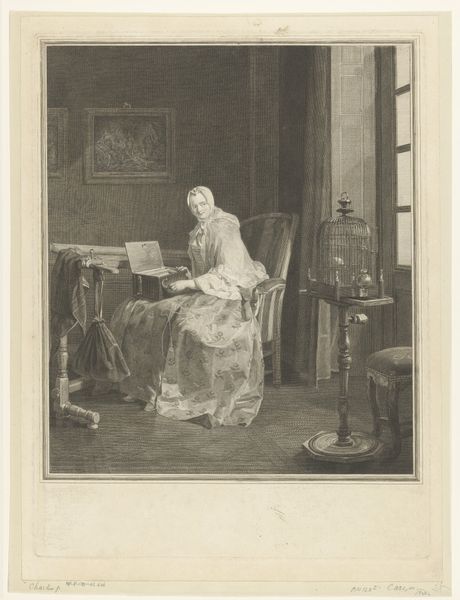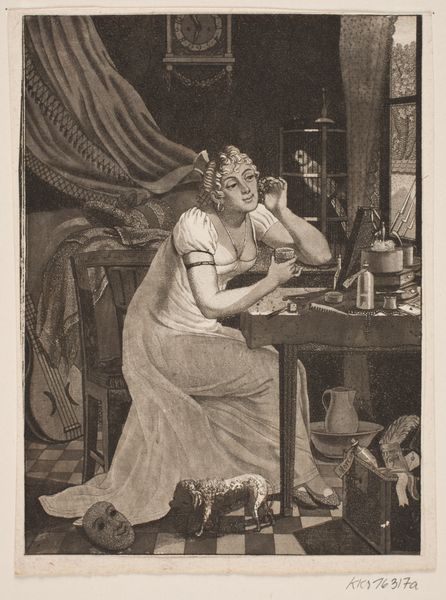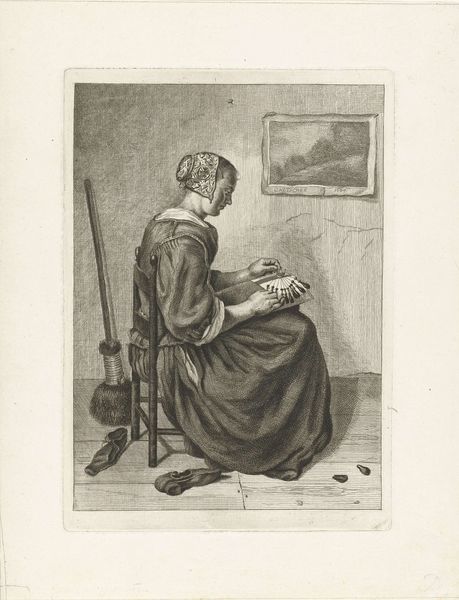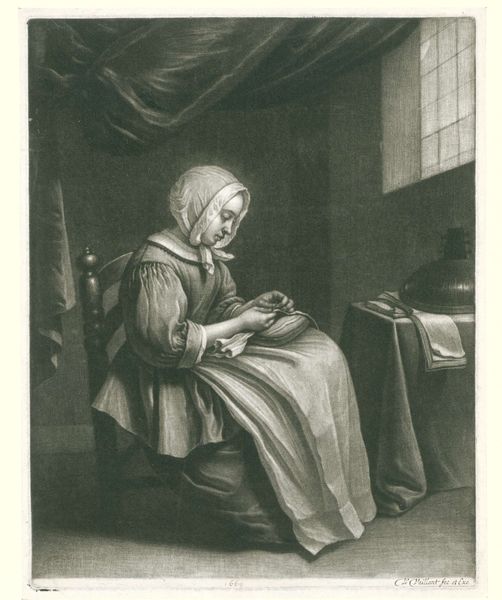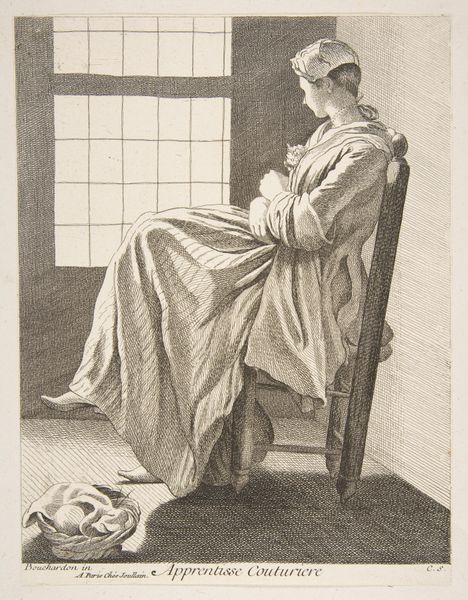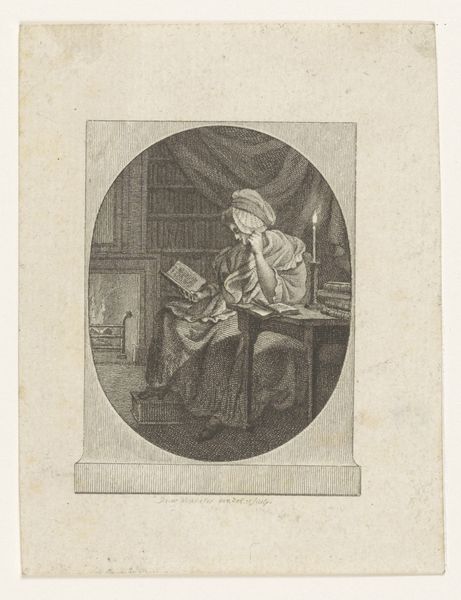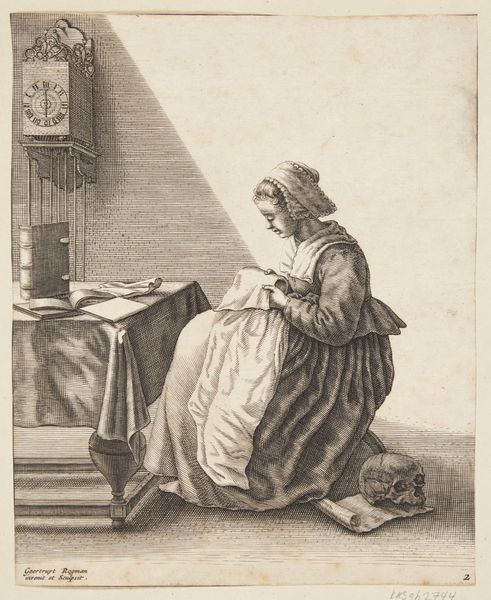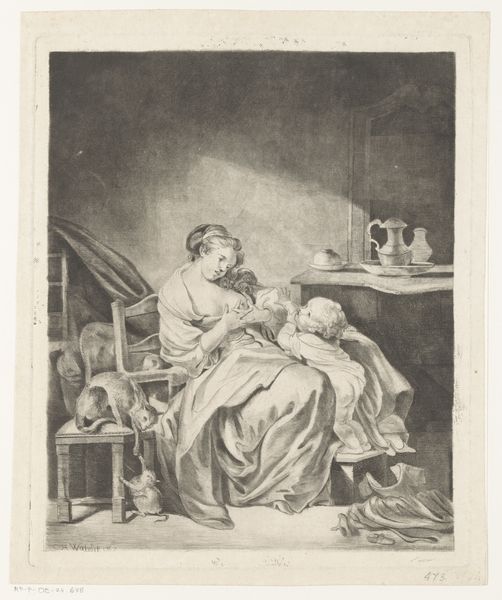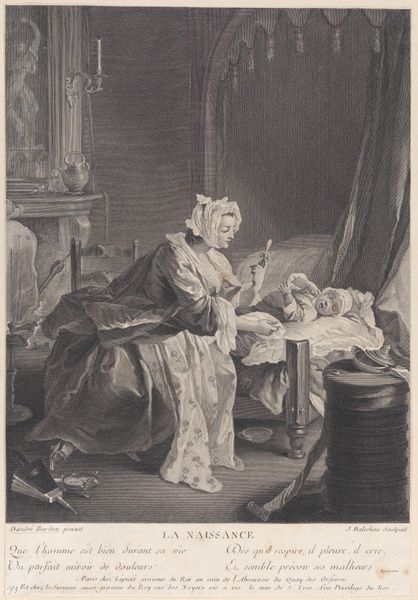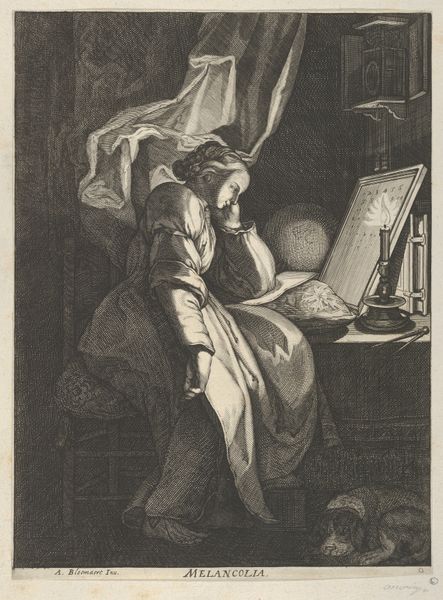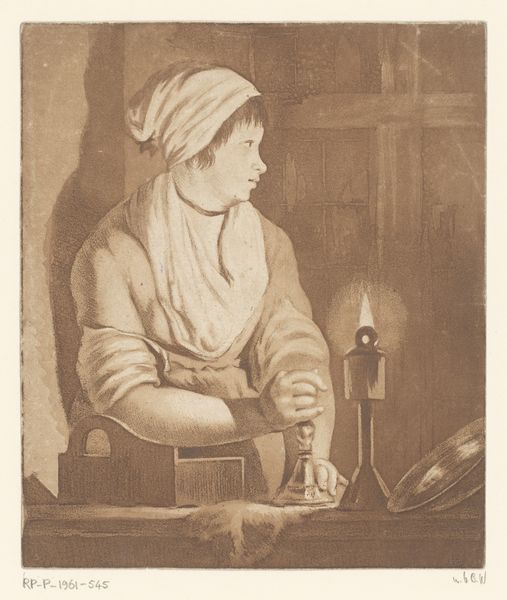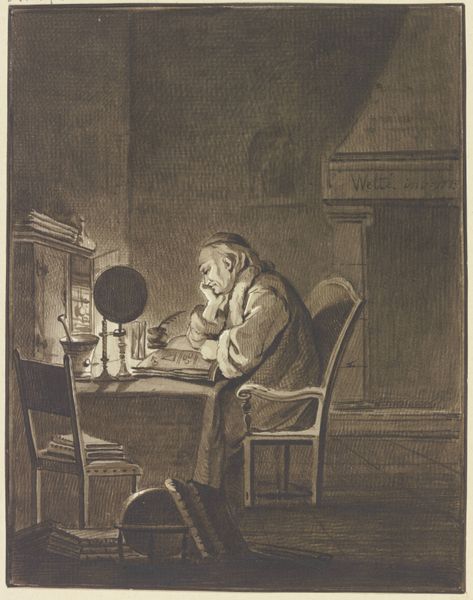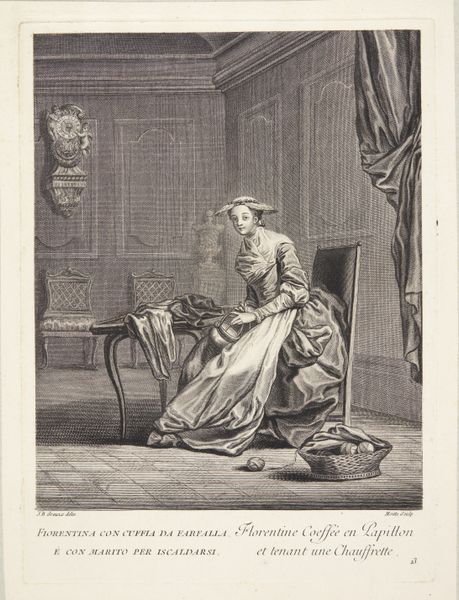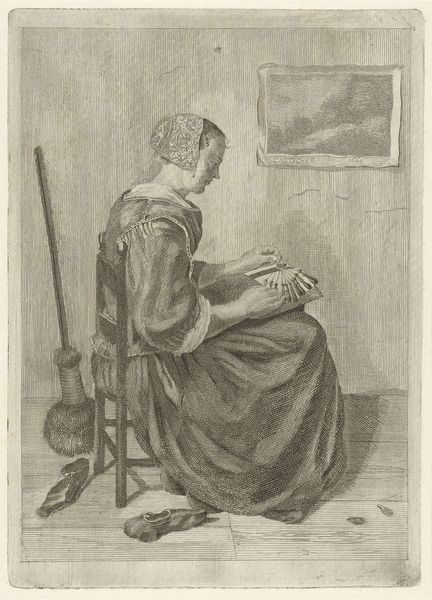
drawing, print, etching, engraving
#
portrait
#
drawing
# print
#
etching
#
genre-painting
#
engraving
#
rococo
Dimensions: Sheet (Trimmed): 14 5/8 × 10 1/16 in. (37.2 × 25.5 cm)
Copyright: Public Domain
Editor: This is Jacques Philippe Le Bas's 1754 engraving, "The Thrifty Woman," residing at the Met. There's a quiet, almost domestic feeling, yet something about the woman’s intense focus on her writing pulls me in. What symbolic language do you see at play in this seemingly simple scene? Curator: The power of symbols is truly fascinating here! Note the quill and inkwell. They speak not merely of literacy, but of a controlled narrative. She’s documenting, accounting—perhaps controlling her own story in a patriarchal society. Notice the provisioned basket—a clear sign of a home manager. Is this simply a domestic scene or is something deeper implied about who holds power? Editor: I see what you mean. The basket and bundles initially made me think of domesticity, but considering her focus, it suggests agency and resource management, a silent strength maybe? Curator: Precisely. And consider what 'thrift' meant in 18th century France. Not merely frugality, but also wisdom, good stewardship. Think of this composition as a window into how the burgeoning middle class saw themselves. A counter narrative to courtly extravagance, grounded and capable. Editor: So the symbolism serves almost as a form of cultural aspiration, showing how one ought to live? Curator: Indeed. Each item, from the window—illumination and the external world—to the carefully itemized bundles suggests order and intentionality. These resonate deeply with that era's values. Even today, these can elicit deep feelings. Editor: It is astonishing how many meanings are packed in one quiet domestic scene. I have a newfound appreciation for what these images communicate about its society. Curator: Absolutely. And, it reinforces how crucial it is for viewers to unravel and contextualize a symbol, bridging eras. It adds nuance and meaning!
Comments
No comments
Be the first to comment and join the conversation on the ultimate creative platform.
